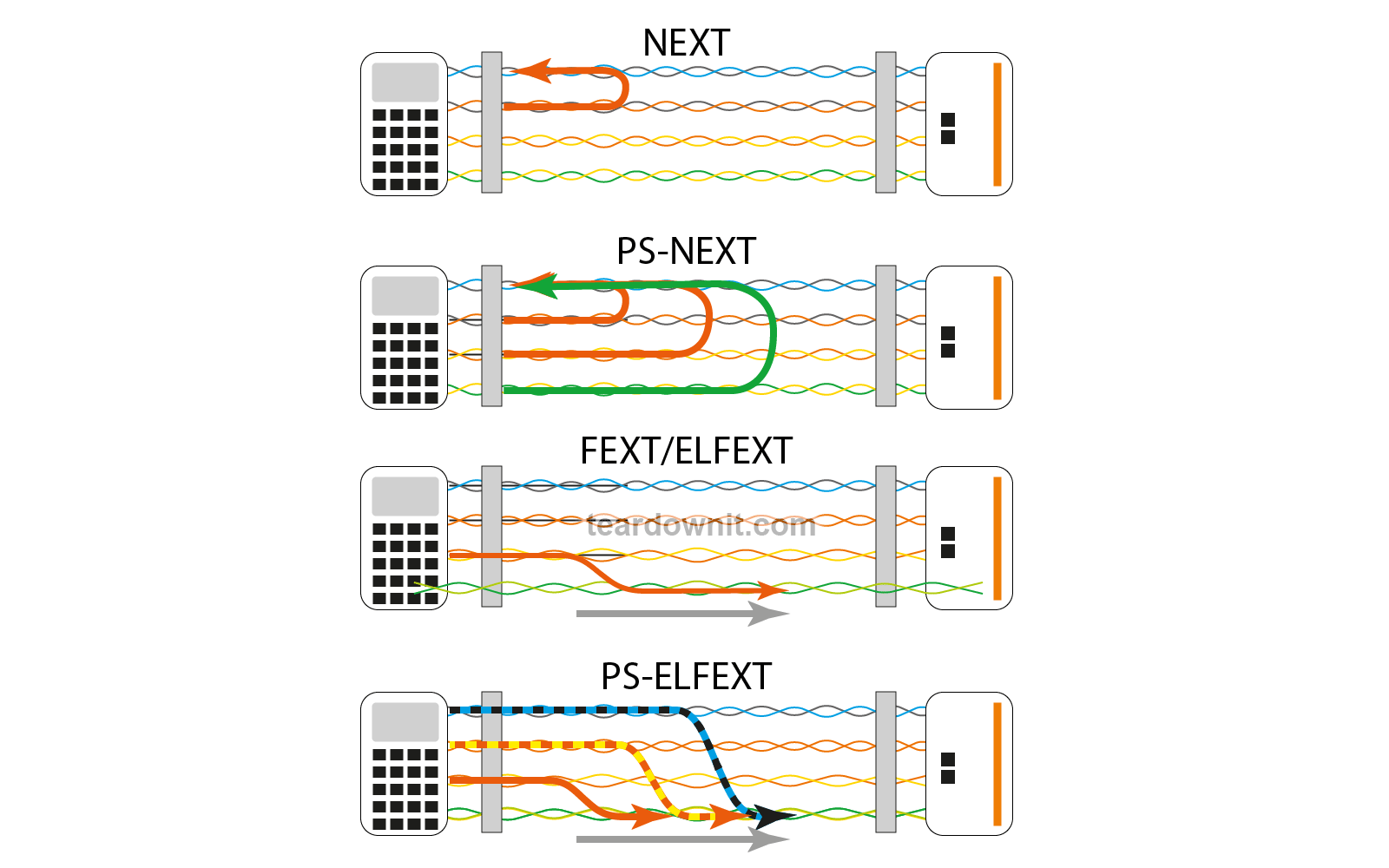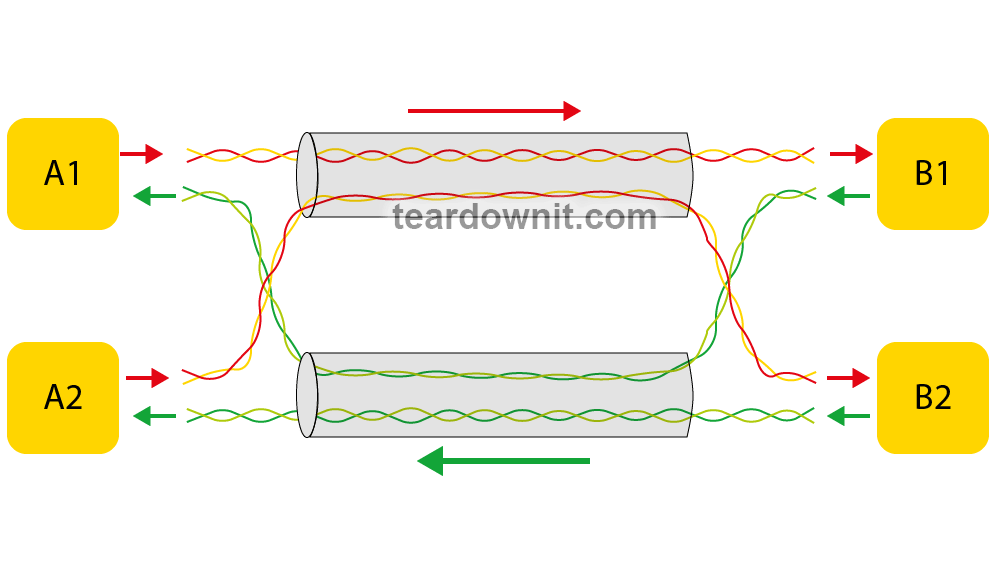The main influences in symmetrical cables are transient influences at the near and far ends. The influences are caused by parasitic electromagnetic and capacitive coupling between pairs of the same cable or several closely spaced cables. Devices for diagnostics and localizing faults in metallic cables are used to assess such transient influences.
The primary method of reducing such influences is to twist the copper pair strands. The most stringent requirements are structured cabling with a wide range of operating frequencies. For example, no twisting is allowed at a distance of no more than 1/2 inch from the two cable segments' connection point.

A transient influence measure is:
- Near End Transient Attenuation (Near End Crosstalk, NEXT)
- Far End Transient Attenuation (Far End Crosstalk, FEXT).
These parameters allow you to assess the suitability of symmetric cable pairs for high-speed data transfer. The transient attenuation NEXT and FEXT can be expressed as the logarithm of the ratio of the oscillator power P1 feeding the affected circuit to the interference power P2 in the affected circuit, that is, as 10lg (P1/P2) dB or as the level difference at the specified p1 to p2 points.
You must remember that the signal or noise level at any point X of the link is estimated as px = 10lg (Px/1mW) dB. Here Px is the signal power at point X. The designation dBm is sometimes used in place of the dB designation to emphasize that a signal power of 1 mW has been chosen as the reference power. We will use the abbreviated dB designation below in the text. The NEXT value is the difference between the signal level at the output of the transmitter of one pair and the interference it creates at the input of the receiver of the other, measured at the same point, i.e., NEXT = p10 - p20.
The NEXT parameter is the major one in single-cable communication mode when signals of opposite directions are transported on pairs of the same cable. NEXT also plays a key role when the echo-compensation method separates signals of opposite directions transmitted over one pair.
As you know, the opposite direction signal spectra completely (for example, for HDSL) or partially (for ADSL) coincide. The value of FEXT is estimated by the signal level difference at the one pair's transmitter output and the interference created by it at the other pair's receiver input. However, unlike NEXT, in a FEXT measurement, the affected pair's transmitter and the affected pair's receiver are located at opposite points on the transmission line.
FEXT is the primary parameter in a two-cable link operation when opposite direction signals are transported on different cable pairs. FEXT is also important when the frequency division method of FDM signals (e.g., in ADSL or VDSL systems) separates opposing direction signals transmitted over the same pair. Then the opposite direction transmission signal spectra do not overlap, and there is no transient effect at the near end.
All other things being equal, the value of FEXT is significantly greater than NEXT because, in the first case, the influencing signal undergoes attenuation in the communication line. In contrast, it directly affects the influenced pair in the second case.
The NEXT parameter first decreases with increasing line length L. Then it stabilizes: starting from a certain length, interference currents from distant sections come so attenuated that they have almost no effect on the NEXT value. The situation is different when mutual interference currents are added at the far end - as the line length increases, all of its sections contribute the same interference values. Transient attenuation decreases with increasing frequency, with NEXT decreasing with frequency at a rate of 15 dB per decade and FEXT decreasing at a rate of 20 dB per decade. The smaller steepness of the FEXT frequency dependence is explained by the attenuation of transient interfering currents coming to the near end from distant line sections increases with frequency.
Using multipair cables for data transmission system



Bidirectional Transmission.
In addition to the discussed parameters NEXT and FEXT, two new parameters are widely used to evaluate structured cabling - ACR and ELFEXT, which we will focus on in the next post.
 teardownit
teardownit
Discussions
Become a Hackaday.io Member
Create an account to leave a comment. Already have an account? Log In.